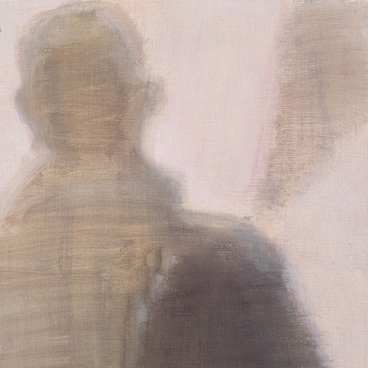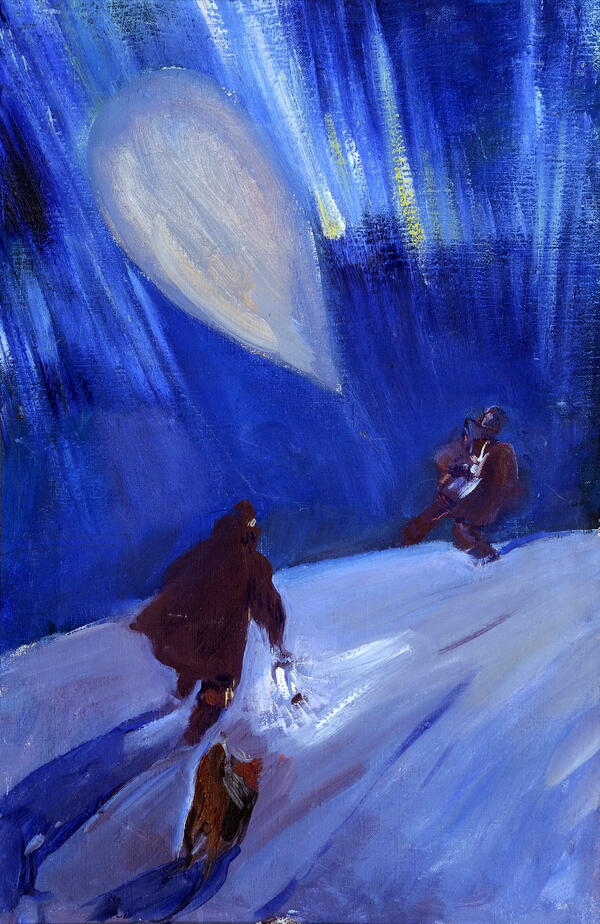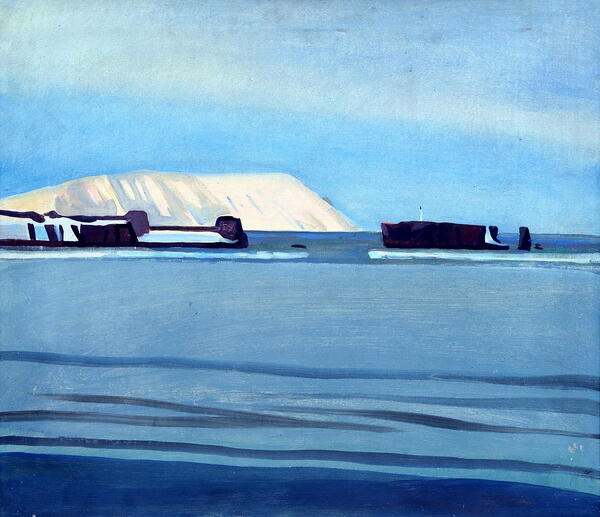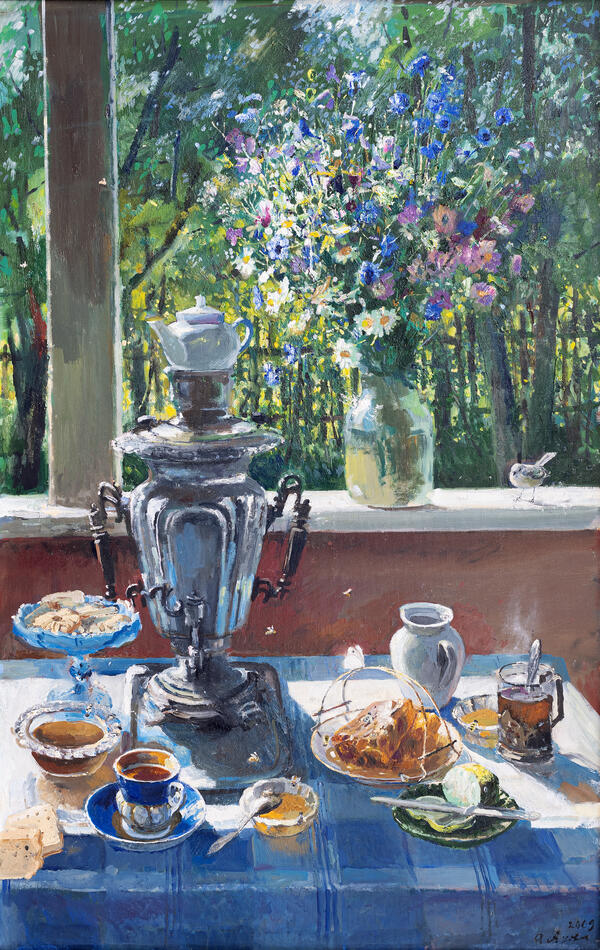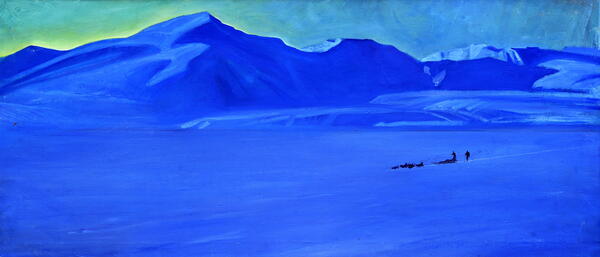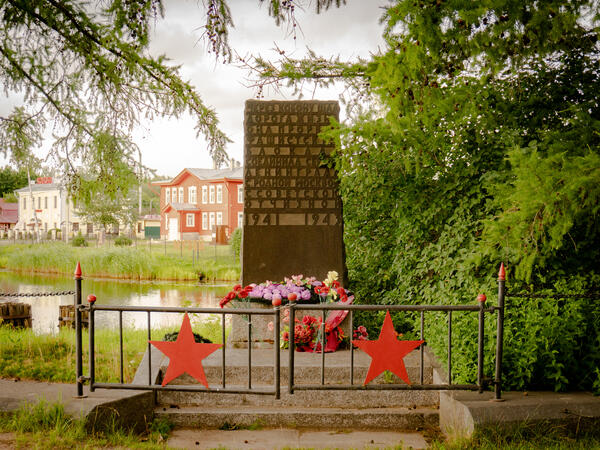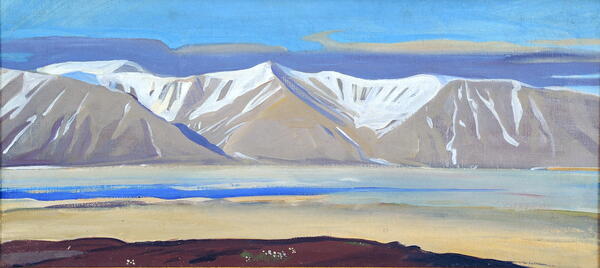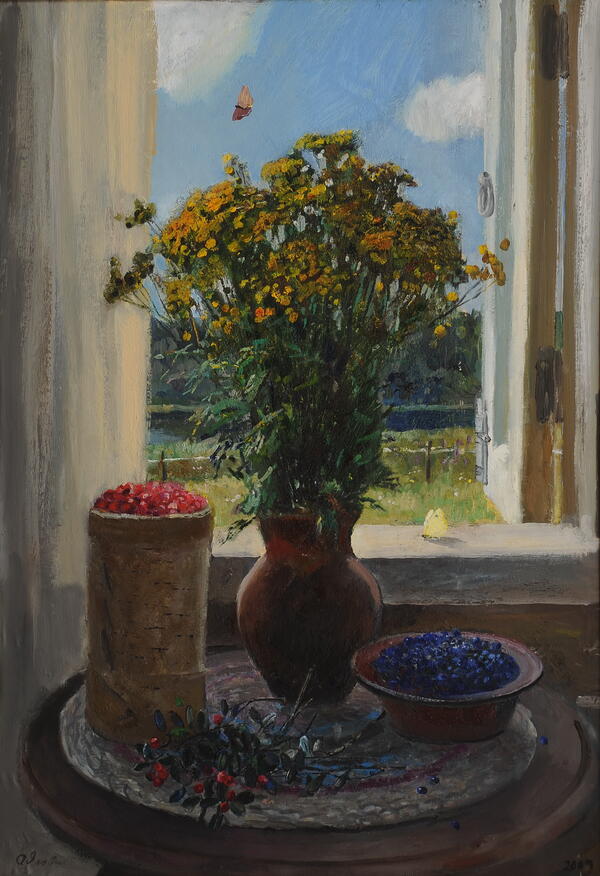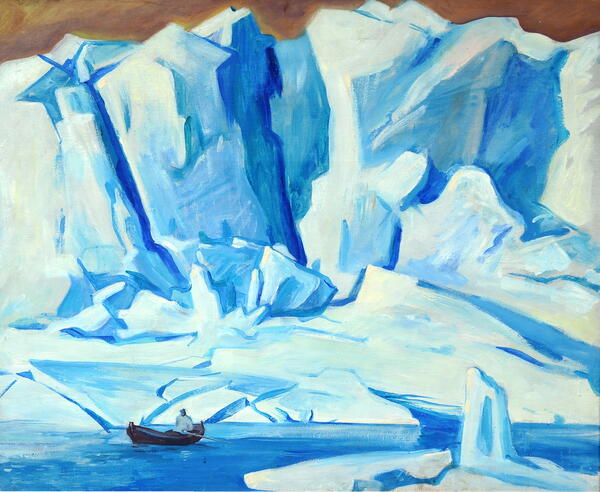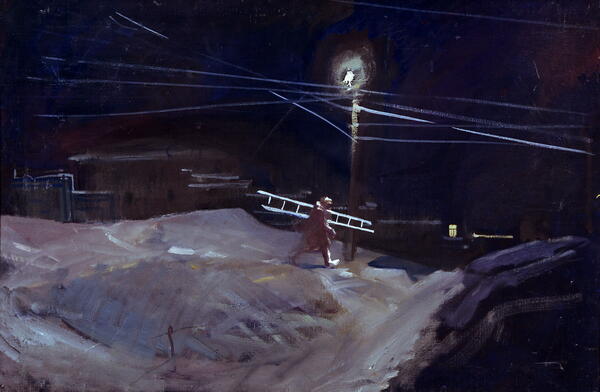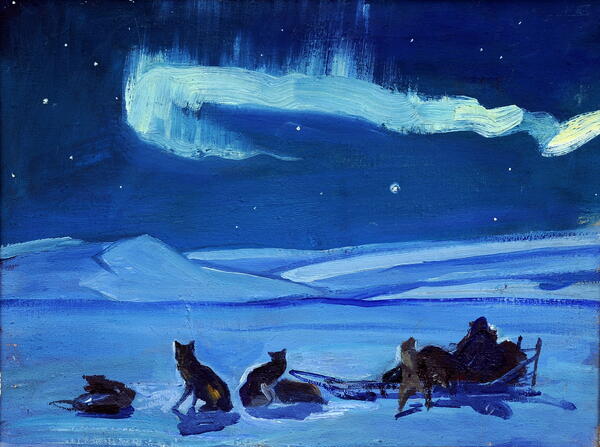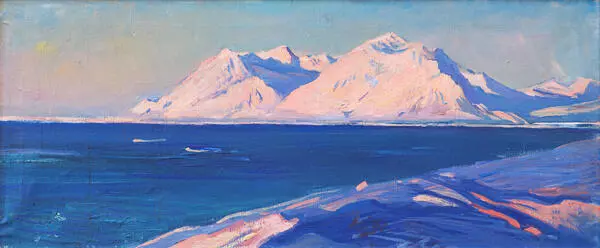Andrey Yakovlev painted the picture “Shift Workers Coming” during his trip to the North and included this work into the “Svalbard” cycle.
Encountering the Arctic became a life-changing experience for a graduate of the Leningrad Institute of Painting, Sculpture and Architecture named after I.E. Repin. In the North, he developed his own perception of space and compositional techniques, and found his own style.
The year that the artist spent on the island of Svalbard proved to be remarkably fruitful. During this period, he created about 300 works. Yakovlev painted en plein air even on a polar night. In his works, the artist rendered clear lines, pure contrasting colors, minimalistic surroundings and vast spaces of the Arctic landscape.
Having returned from the island of Svalbard, the artist organized his first solo exhibition in the Murmansk Regional Museum of Local Lore.
Andrey Yakovlev admired the works of the American artist Rockwell Kent. In his art Rockwell Kent depicted the northern peoples of Greenland and Alaska, as well as the nature of the Atlantic. Parallels can be traced between Yakovlev’s paintings and the works of his American counterpart.
In 1962, Yakovlev became a member of the Union of Artists of the RSFSR.
Andrey Yakovlev was awarded the silver medal of VDNKh of the USSR “For Merits in the Development of the National Economy” for a series of works dedicated to the North. He also received the medal “For the Construction of the Baikal–Amur Mainline”. In 1979, he was awarded the State Prize of the RSFSR named after I.E. Repin for the painting “Happy”.
Andrey Yakovlev’s works are housed in the State Russian Museum, the Murmansk Regional Art Museum, as well as in museums and private collections in Russia, Italy, Great Britain, Japan, Norway, and France.
The painting “Shift Workers Coming” is one of the artist’s first works created in the North. The color palette is ascetic in a manner characteristic of the artist, there are only a few subtle shades. Andrey Yakovlev makes the images of shift workers look so schematic that they almost look like silhouettes. The brave toilers of the Arctic stand out against a backdrop of endless snowy expanses.
Encountering the Arctic became a life-changing experience for a graduate of the Leningrad Institute of Painting, Sculpture and Architecture named after I.E. Repin. In the North, he developed his own perception of space and compositional techniques, and found his own style.
The year that the artist spent on the island of Svalbard proved to be remarkably fruitful. During this period, he created about 300 works. Yakovlev painted en plein air even on a polar night. In his works, the artist rendered clear lines, pure contrasting colors, minimalistic surroundings and vast spaces of the Arctic landscape.
Having returned from the island of Svalbard, the artist organized his first solo exhibition in the Murmansk Regional Museum of Local Lore.
Andrey Yakovlev admired the works of the American artist Rockwell Kent. In his art Rockwell Kent depicted the northern peoples of Greenland and Alaska, as well as the nature of the Atlantic. Parallels can be traced between Yakovlev’s paintings and the works of his American counterpart.
In 1962, Yakovlev became a member of the Union of Artists of the RSFSR.
Andrey Yakovlev was awarded the silver medal of VDNKh of the USSR “For Merits in the Development of the National Economy” for a series of works dedicated to the North. He also received the medal “For the Construction of the Baikal–Amur Mainline”. In 1979, he was awarded the State Prize of the RSFSR named after I.E. Repin for the painting “Happy”.
Andrey Yakovlev’s works are housed in the State Russian Museum, the Murmansk Regional Art Museum, as well as in museums and private collections in Russia, Italy, Great Britain, Japan, Norway, and France.
The painting “Shift Workers Coming” is one of the artist’s first works created in the North. The color palette is ascetic in a manner characteristic of the artist, there are only a few subtle shades. Andrey Yakovlev makes the images of shift workers look so schematic that they almost look like silhouettes. The brave toilers of the Arctic stand out against a backdrop of endless snowy expanses.



